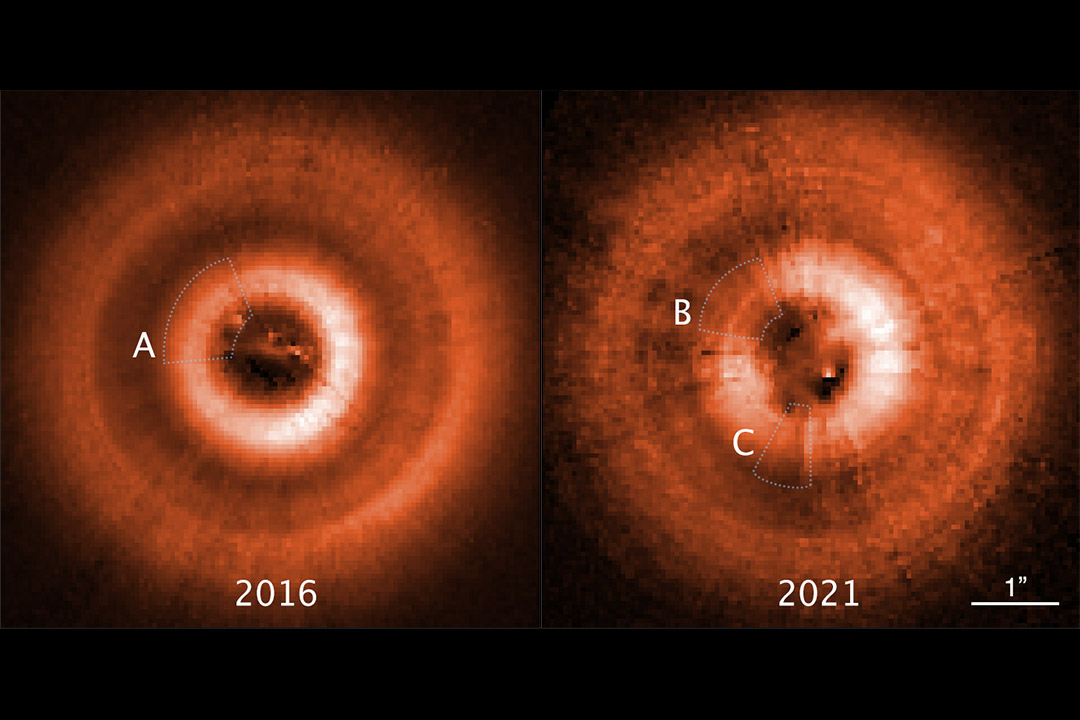RIT scientist helps explore mysterious shadow play around planet-forming disk
Professor Joel Kastner is part of a new Hubble Space Telescope study examining TW Hydrae
Debes et al.
Visible light images of the TW Hydrae disk in 2016 and 2021. In 2021, the smooth shadow features (marked as “A”) have split into two shadow features marked by the “B” and “C.”
A Rochester Institute of Technology astrophysicist is part of a team of scientists using the Hubble Space Telescope to study how the changing patterns of shadows cast on the dusty disks orbiting young stars can reveal the presence of newly formed planets. Professor Joel Kastner from RIT’s Chester F. Carlson Center for Imaging Science and School of Physics and Astronomy is part of a new study led by John Debes of the Space Telescope Science Institute in Baltimore that compares Hubble images of the red dwarf star TW Hydrae obtained in 2016 and 2021.
In 2017, the same team of astronomers reported discovering a shadow sweeping across the face of a vast pancake-shaped gas-and-dust disk surrounding the nearby young star TW Hydrae. The shadow isn’t from a planet, but an inner disk slightly inclined to the much larger outer disk – causing it to cast a shadow. One explanation is that an unseen planet’s gravity is pulling dust and gas into the planet’s inclined orbit.
Now, a second shadow has emerged in just a few years between observations stored in the Hubble’s MAST archive. This could be from yet another disk nestled inside the system. The two disks are likely evidence of a pair of planets under construction.
“The latest observations, reported on this paper, show that the shifting shadow patterns are very complex -- and they’re not easily predictable,” said Kastner. “Those bizarre disk shadowing changes indicate that the disk’s warping structure is complex, and that complexity, in turn, points to the presence of not just one, but multiple young planets orbiting within the innermost regions of the disk.”
Kastner said TW Hydrae offers one of nearest-known examples of what we think is a system of planets just now in the process of forming out of a disk of gas and dust orbiting the star, 10 million years or so after the star itself formed. He has been studying the star and its orbiting disk for more than 30 years, using observations across the electromagnetic spectrum from radio waves to X-rays. He has been collaborating with Debes’s team for the past decade.
The TW Hydrae data are from Hubble’s Space Telescope Imaging Spectrograph. Future imaging taking advantage of the James Webb Space Telescope’s infrared vision may also be able show the shadow in more detail.
TW Hydrae is less than 10 million years old and lies about 200 light-years away. The TW Hydrae system may resemble our newborn solar system shortly after the sun’s birth, nearly 5 billion years ago.













